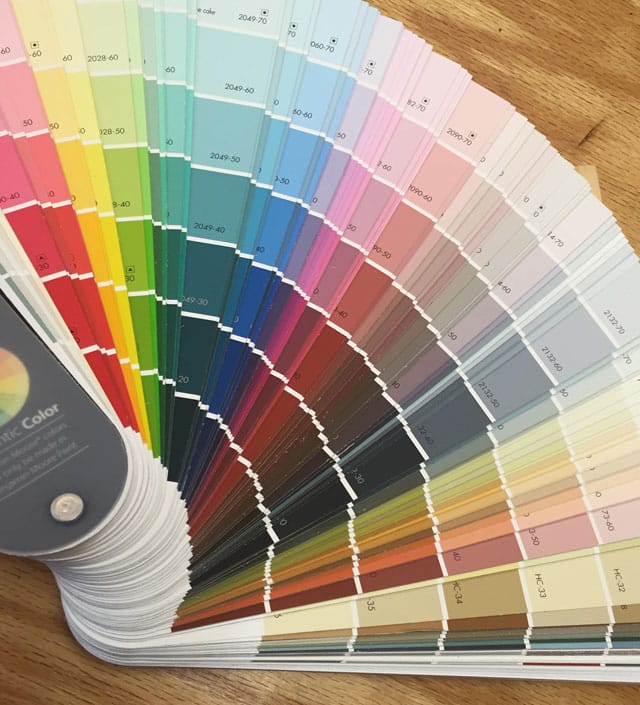
Take a second to consider how often we use colors to communicate in our everyday speech. Did anything ever make you “see red”? Did some topic or decision fall in a “gray area”? Did your latest idea get a “green light” from the committee? Did you ever have a day where you just felt kind of “blue”? Do you know people who tend to think in “black or white” terms? When you come to think about it, have you ever had something “color” a decision you made?
The fact is, colors, and the feelings they tend to generate, are a powerful determinant of our daily thoughts, actions, moods and decisions, whether we realize it or not. And guess what? Marketers know this — and psychologists, too. There’s an entire science around the study of color and its effect on the human thought process. If you doubt this, try googling phrases like “color and human behavior,” “color psychology,” “color research” and similar terms.
The key takeaway here is that while it’s obvious that your branding, marketing and outreach efforts must include substantive, well informed content focused on topics that your clients and ideal prospects want to know about, the way you package and present that content makes a huge difference in the way your clients and prospects will receive it, feel about it, and react to it.
If the object of your outward-facing communications is to present yourself as a knowledgeable, dependable, and valuable guide for the financial journey — and to convert prospects into loyal clients — then you need to be paying attention to the right-brain oriented “color message” you’re sending, along with the left-brain-dominant text it’s wrapped around.
Basics of color science
Since at least the times of Da Vinci (1452–1519) and Goethe (1749–1832), people have been studying color and its effects on human behavior. Over the centuries, theories about the attributes of color and their behavioral effects have been developed, revised and refined. Think for a moment about your own reactions to color and some of the companies that feature them, all in the context of these general principles:
- Red: Passion, energy, excitement (Coca-Cola, Target Stores)
- Blue: Calm, trust, tranquility (IBM, HP, Merrill Lynch, Barclays)
- Yellow: Optimism, happiness, cheerfulness (Hertz, Post-It, Nikon, McDonald’s)
- Green: Nature, balance, growth, relaxation (Starbuck’s Spotify, Whole Foods)
- Purple: Luxury, sophistication, mystery (Hallmark, Cadbury, Roku)
- Orange: Energy, vitality, adventure (Amazon, Nickelodeon, Home Depot)
- Pink: Femininity, nurture, tenderness, youthfulness (Barbie, Cosmopolitan, Victoria’s Secret, Lyft, T-Mobile)
- Black: Severity, formality, authority (Max, Adidas, Asos, ABC)
- White: Purity, openness, clarity (as secondary color: Coca-Cola, Meta)
- Brown: Steadiness, balance, security (UPS, Hershey’s, M&Ms)
While your reactions may differ slightly from these, they capture the broad sweep of how colors affect our emotions and perceptions. And of course, cultural perspectives also influence our reactions to color. For example, in most Western cultures, black is strongly associated with mourning and funerals, but in many Asian cultures, white is the traditional color worn by family members who have lost loved ones.
Concerning color and marketing, an article in Psychology Today reports that shoppers found stores with interiors dominated by the color blue as more likeable. Even more dramatic, another study found that after blue lights were installed at 71 Japanese train stations in the years 2000–2010, an 84% decrease in the number of suicides was reported. Clearly, color matters!
Color and messaging
We’ve written previously about the importance of visuals in your client communications. And you already know that as you think about your branding and public-facing visual content, you should be considering your target persona: What face, personality, and attitudes characterize the people you’re trying to reach or retain? It should be obvious by this point, then, that the color palette you choose deserves careful consideration, as well.
Additional Reading: The ESG Conversations You Need to Prepare For
As you consider your “ideal” client or prospect, along with what you know about their goals, aspirations, priorities and communication preferences, what do you want them to feel about what you’re telling them? The outcome of that consideration should drive your choices around the colors accompanying your visuals, whether online or in hard-copy collateral. Your choice of color and placement will direct your readers’ eyes in where to look, what to pay most attention to, how to interpret, and what context to use while consuming your communications.
Contrast. High, low, and medium contrast in color use can provide your communications with subtlety or emphasis, depending on how you deploy it. Typically, high contrast is the logical choice for communicating important content, simply because it is the easiest to see and read.
Combination. A key principle here is simplicity. Unless you are an artist who wants to send a complex, highly nuanced message, your color combinations should be limited to two or three colors. In fact, a study from the University of Toronto indicated that most viewers preferred a simpler palette; it made the content easier to understand.
Complementary. Contrasting colors (complementary; at opposite positions on the color wheel) make things stand out. It makes sense, when you think about it — after all, opposites attract!
Color blind? A word of caution: about 4.5% of the world population is color blind — unable to perceive the difference between certain contrasting color combinations, like red and green. (More males than females are color blind: about 1 in 12 men possess the trait, compared with about 1 in 200 women.) One way to overcome this is to focus on high-contrast combinations. Including additional text — which doesn’t require color sensitivity for interpretation — and using of larger fonts for emphasis can also help ensure that important information isn’t missed. So, if your communication includes charts, make sure that the key points are conveyed in text as well as color.
Connections. Finally, keep in mind the subconscious connections your readers/viewers are likely to make with the colors you use. Landmark research by Faber Birren, author of Color Psychology and Color Therapy (1961) indicates that certain words are predominately associated in people’s minds with particular colors. For example:
- Trust: blue
- Security: blue
- Speed: red
- Low cost: orange
- High quality: black
- High tech: split almost evenly between black and blue-gray
- Reliability: blue
- Courage: purple, red, blue
- Fear: red
- Fun: orange, yellow
As you study this list, look back at the attributes and companies listed with the various colors, above. Do you see correlations? Differences?
Color and marketing to an older audience
Because many advisors target much of their marketing to persons approaching or in retirement, the age factor is important to consider. As we age, we begin to perceive visual material differently. Deterioration of visual acuity, changes in depth perception, and even emotional responses to specific colors all factor in to how your older clients and prospects will respond to your branding and marketing visuals.
For example, red has been shown to increase heart rate and brain wave activity. For seniors, it can help to induce attention and interest. In one survey, it was identified as a “favorite color” by 34% of participants 70+ years of age — the largest “red” percentage of any age group surveyed. On the other hand, brown was judged “least favorite” by 32% of seniors; this age group was also the largest segment of the survey to give brown the “thumbs down.”
Highly contrasting colors and simple patterns may also be important for older persons. Because these qualities aid in depth perception and are easier to decipher for those with less acute vision, applying these principles in your visual design may help older viewers better grasp and retain what you are trying to communicate.
Summing up
As you develop your branding and visual communication plan, it’s vital to give careful attention to the color palette you’re using. Whether you — or your target audience — realize it or not, colors really do “color” the way we all think, react and decide.
Gretchen Halpin is co-founder of Beyond AUM, a growth, marketing and technology agency that specializes in serving financial advisory firms. A strategic visionary with over 25 years of leadership and marketing experience, including a history of starting and growing successful companies, Halpin pioneers the strategy and growth initiatives that drive success across every aspect of business while ensuring that decisions are aligned with her clients’ overall mission.







